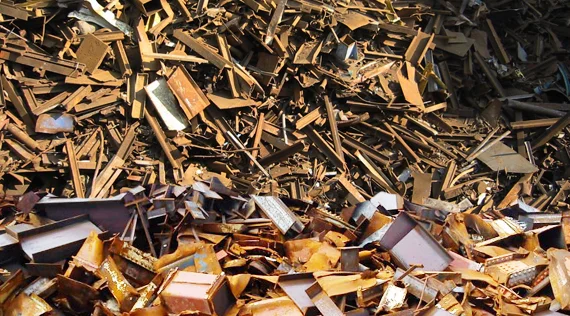Telecom company to pay $52 million for e-waste dumping
E-waste Recycling | 2014-11-22 04:29:36
AT&T has agreed to pay nearly $52 million for illegally dumping hazardous electronic waste
ALBANY (Scrap Monster): AT&T has agreed to pay nearly $52 million for illegally dumping hazardous electronic waste, in a settlement that represents the first legal action taken in California against a telecommunication company’s e-waste dumping.
Over the next five years, AT&T will pay $28 million to improve its environmental compliance measures, in addition to $23.8 million in civil penalties and other legal costs. The settlement, which still needs court approval to become official, is a result of a 2011 investigation by a California District Attorney’s Office and the state Department of Toxic Substances Control that found that AT&T was “routinely and systematically sending hazardous wastes to local landfills that were not permitted to receive those wastes.” According to the investigation, more than 230 AT&T warehouses and facilities across California had, over a period of nine years, been improperly handling and disposing of hazardous wastes, including batteries, aerosol cans, and certain gels and liquids.
“This settlement holds AT&T accountable for unlawfully dumping electronic waste,” California Attorney General Kamala D. Harris said in a statement. “The illegal disposal of hazardous waste can lead to serious environmental and health risks for California communities. AT&T will be required to implement strict compliance measures at its facilities that set an example for other companies to safeguard our communities against hazardous waste.”
The environmental protection measures that AT&T has agreed to take are intended to be enough to prevent the company from illegally disposing of e-waste in the future. AT&T will be subject to three independent audits over the next five years, in addition to hundreds of annual “unannounced dumpster inspections.”
The settlement falls short, however, of forcing AT&T to clean up the improperly disposed of e-waste — which, when disposed of in a regular landfill, can cause toxic materials to seep into the earth. An order to clean up the waste is something that some California advocates hoped would come out of the legal proceedings.
“They’re being fined what amounts to chump change for a company like AT&T, and the public is not going to be protected in the end because wherever they’ve illegally disposed of that waste, it’s going to stay there,” Liza Tucker of California-based Consumer Watchdog told Reuters.
But AT&T isn’t the only company to be hit with legal action for its improper disposal of e-waste. In 2011, Target agreed to pay $22.5 million to settle a lawsuit that charged the company with illegally disposing of hazardous waste in hundreds of California stores. In 2013, the owner of Colorado-based Executive Recycling Inc. was sentenced to 30 months in federal prison for his role in the company, which billed itself as an e-waste recycler but which in reality had been selling electronic waste to overseas buyers. Executive Recycling was also sentenced to pay a $4,500,000 fine and serve three years probation for fraud and international environmental crimes.
The disposal of e-waste — which, depending on the type, can include a wide range of toxic substances including lead, mercury, and arsenic — presents major environmental challenges worldwide. In 2013, Bloomberg called the disposal of e-waste “one of the biggest conundrums of the digital age,” citing data that showed that out of the 47.4 million computers, 27.2 million televisions, and 141 million mobile devices disposed of in the U.S. each year, only a quarter are recycled.
The amount of e-waste generated around the world is only expected to grow — the U.N. predicted in 2013 that e-waste would grow by 33 percent worldwide over the next four years. This growth in e-waste hits poor nations particularly hard: e-waste is routinely shipped overseas — some say under false pretenses, with boxes of useless e-waste labeled as “used goods” — where it ends up in huge landfills. Poor residents pick through the landfills for aluminum and copper, which they can sell. These landfills, like the one in Agbogbloshie, Ghana that the Guardian described in 2013, expose residents and the local environment to toxic fumes and materials:
Deeper into the heart of Agbogbloshie, huge plumes of foul-smelling smoke rise up from three large fires, where the dismantled items are burned to remove traces of plastic, leaving the metal behind. The fumes are head-pounding, but the men, women and children weaving in and out of the fires seem oblivious. Goats sleep deeply beside the upturned remains of a tree, now strewn with plastic rubbish….Women and girls wander the sprawling site, hawking peeled oranges, water sachets and cooked food. Many have tiny babies wrapped in cloth tied tightly to their backs, all inhaling the toxic fumes.
In the U.S., one EPA-endorsed company, E-Stewards, sets a standard for e-waste recyclers participating in its certification program, forbidding the recyclers from shipping e-waste overseas. Multiple companies, including Dell, have also pushed for legislation that would ban the export of e-waste, but so far, efforts have failed in Congress.
Courtesy: http://thinkprogress.org
 By
By 